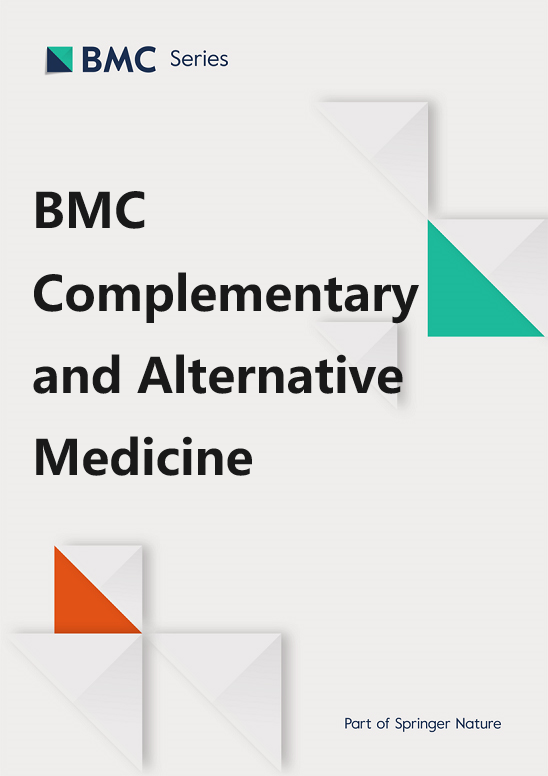薯蓣提取物及其活性成分黄连素对皮肤相关细菌的抗菌活性
IF 3.4
2区 医学
Q1 Medicine
引用次数: 0
摘要
在泰国,薯蓣(Dioscorea bulbifera Linn.)已被用于伤口护理。然而,需要对其抗菌活性进行全面评估。本研究旨在调查球茎薯蓣萃取物对皮肤相关细菌的抗菌功效,并分离和鉴定其活性抗菌剂黄黄连素。将风干的球茎粉碎,用正己烷、二氯甲烷、乙酸乙酯、甲醇、乙醇和蒸馏水提取,真空过滤,浓缩,冷冻干燥,储存于 -20 ºC。使用微量稀释技术评估了提取物对几种皮肤相关细菌的抗菌活性。采用薄层色谱(TLC)生物自动层析技术确定了提取物中的活性化合物,并通过柱层析和制备型 TLC 进行了分馏和纯化。利用核磁共振(NMR)分析了纯化化合物的化学结构。在 Vero 细胞中评估了提取物及其活性化合物的细胞毒性。与其他提取物相比,乙酸乙酯提取物对细菌的抑制作用明显。因此,在随后的分析中使用了醋酸乙酯层中的 D. bulbifera 提取物。D.bulbifera提取物具有抗菌活性,最低抑菌浓度(MIC)为0.78-1.56 mg/mL。通过 TLC 生物指纹图谱鉴定出的一种活性化合物显示出更强的抗菌活性,最低抑菌浓度为 0.02-0.78 mg/mL。核磁共振分析确定这种生物活性化合物为黄花菜素。D.bulbifera萃取物和含黄连素的馏分都对金黄色葡萄球菌、耐甲氧西林金黄色葡萄球菌(MRSA)和表皮葡萄球菌具有很强的抗菌活性。含黄素的馏分对 Vero 细胞的细胞毒性较低,CC50 值为 0.41 ± 0.03 mg/mL。这些值低于 MIC 值,表明该馏分比最初的乙酸乙酯提取物更安全。薯蓣提取物及其生物活性成分黄连素对皮肤相关细菌葡萄球菌(包括 MRSA)具有显著的抗菌活性。由于黄花菜素具有强大的抗菌效果和较低的细胞毒性,因此有望成为治疗皮肤感染的辅助治疗剂。本文章由计算机程序翻译,如有差异,请以英文原文为准。
Antibacterial activity of Dioscorea bulbifera Linn. extract and its active component flavanthrinin against skin-associated bacteria
Dioscorea bulbifera Linn. has been used for wound care in Thailand. However, a comprehensive evaluation of its antibacterial activity is required. This study aimed to investigate the antibacterial efficacy of D. bulbifera extract against skin-associated bacteria and isolate and characterize its active antibacterial agent, flavanthrinin. Air-dried bulbils of D. bulbifera were pulverised and extracted with hexane, dichloromethane, ethyl acetate, methanol, ethanol, and distilled water; vacuum filtered; concentrated; freeze-dried; and stored at -20 ºC. Antibacterial activity of the extracts was assessed using microdilution techniques against several skin-associated bacteria. Thin-layer chromatography (TLC) bioautography was used to identify the active compounds in the extract, which were fractionated by column chromatography and purified by preparative TLC. The chemical structures of the purified compounds were analysed using nuclear magnetic resonance (NMR). The cytotoxicity of the extract and its active compounds was evaluated in Vero cells. The ethyl acetate extract exhibited distinct inhibition zones against bacteria compared to other extracts. Therefore, the ethyl acetate extract of D. bulbifera in the ethyl acetate layer was used for subsequent analyses. D. bulbifera extract exhibited antibacterial activity, with minimum inhibitory concentrations (MICs) of 0.78–1.56 mg/mL. An active compound, identified through TLC-bioautography, demonstrated enhanced antibacterial activity, with MICs of 0.02–0.78 mg/mL. NMR analysis identified this bioactive compound as flavanthrinin. Both D. bulbifera extract and flavanthrinin-containing fraction demonstrated potent antibacterial activity against Staphylococcus aureus, methicillin-resistant S. aureus (MRSA), and S. epidermidis. The flavanthrinin containing fraction demonstrated low cytotoxicity against Vero cells, showing CC50 values of 0.41 ± 0.03 mg/mL. These values are lower than the MIC value, indicating that this fraction is safer than the initial ethyl acetate extract. Dioscorea bulbifera extract and its bioactive component flavanthrinin demonstrated significant antibacterial activity against the skin-associated bacteria Staphylococci, including MRSA. Flavanthrinin has potential as a complementary therapeutic agent for managing skin infections owing to its potent antibacterial effects and low cytotoxicity.
求助全文
通过发布文献求助,成功后即可免费获取论文全文。
去求助
来源期刊

BMC Complementary and Alternative Medicine
INTEGRATIVE & COMPLEMENTARY MEDICINE-
CiteScore
7.00
自引率
0.00%
发文量
0
审稿时长
3 months
期刊介绍:
BMC Complementary Medicine and Therapies is an open access journal publishing original peer-reviewed research articles on interventions and resources that complement or replace conventional therapies, with a specific emphasis on research that explores the biological mechanisms of action, as well as their efficacy, safety, costs, patterns of use and/or implementation.
 求助内容:
求助内容: 应助结果提醒方式:
应助结果提醒方式:


